One won’t find bravura brushstrokes in the work of Portland, Oregon, artist Don Bishop. But one may find indications that paint was applied or spread on the canvas with twigs.
“I am much more into the process of the paint and the technique to apply it,” says Bishop. “I like to approach what I am seeing in a different manner, to not use traditional tools. I usually start with towels, palette knives, and paint scrapers. Brushes generally don’t come into it until the end. Or, I’ll take grass and sticks and bind them together with tape and make organic marks that way. There’s precedent for this — Turner and Inness used their hands or other tools to apply the paint.”
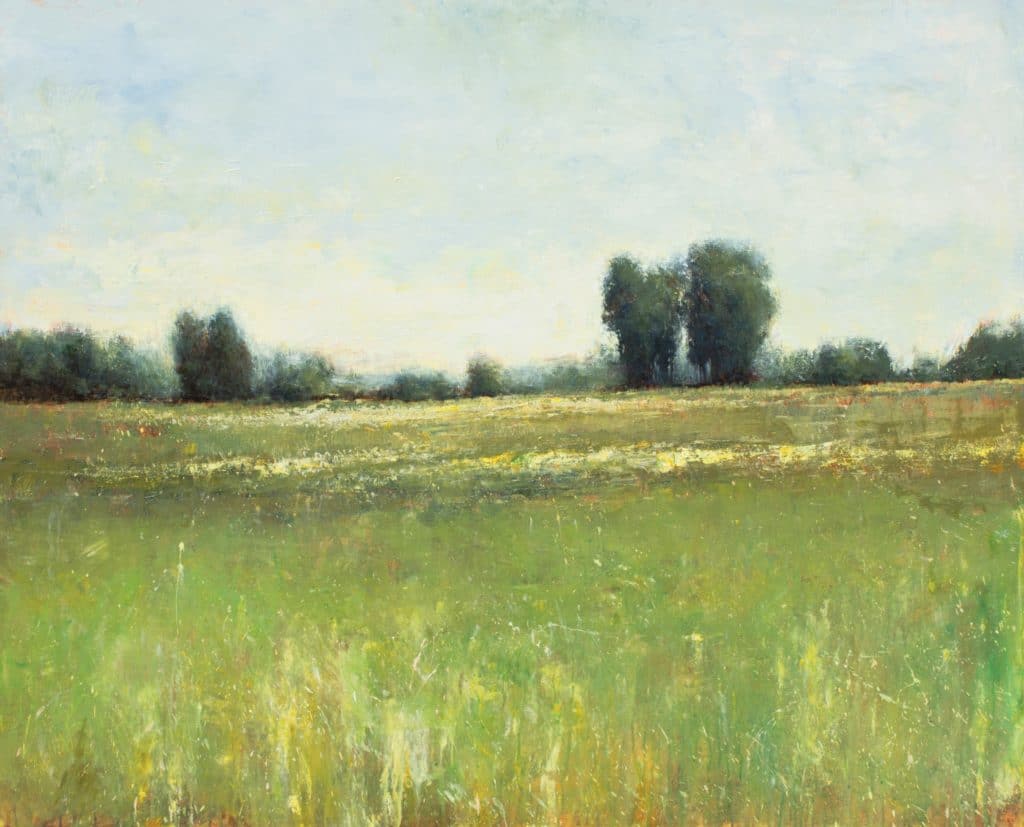
With scratchy marks, many indistinct outlines, and colors that look as though they were applied and scraped off and reapplied in layers, Bishop’s work summons the haze of summer and the humidity of oppressive weather. The broken color allows complexity and texture. “It is a naturalist view of things,” says the artist. “I am trying to capture light in the atmosphere. I am trying to stay true to life. It is subtle. That’s the way I can depict the atmospheric shifts.”
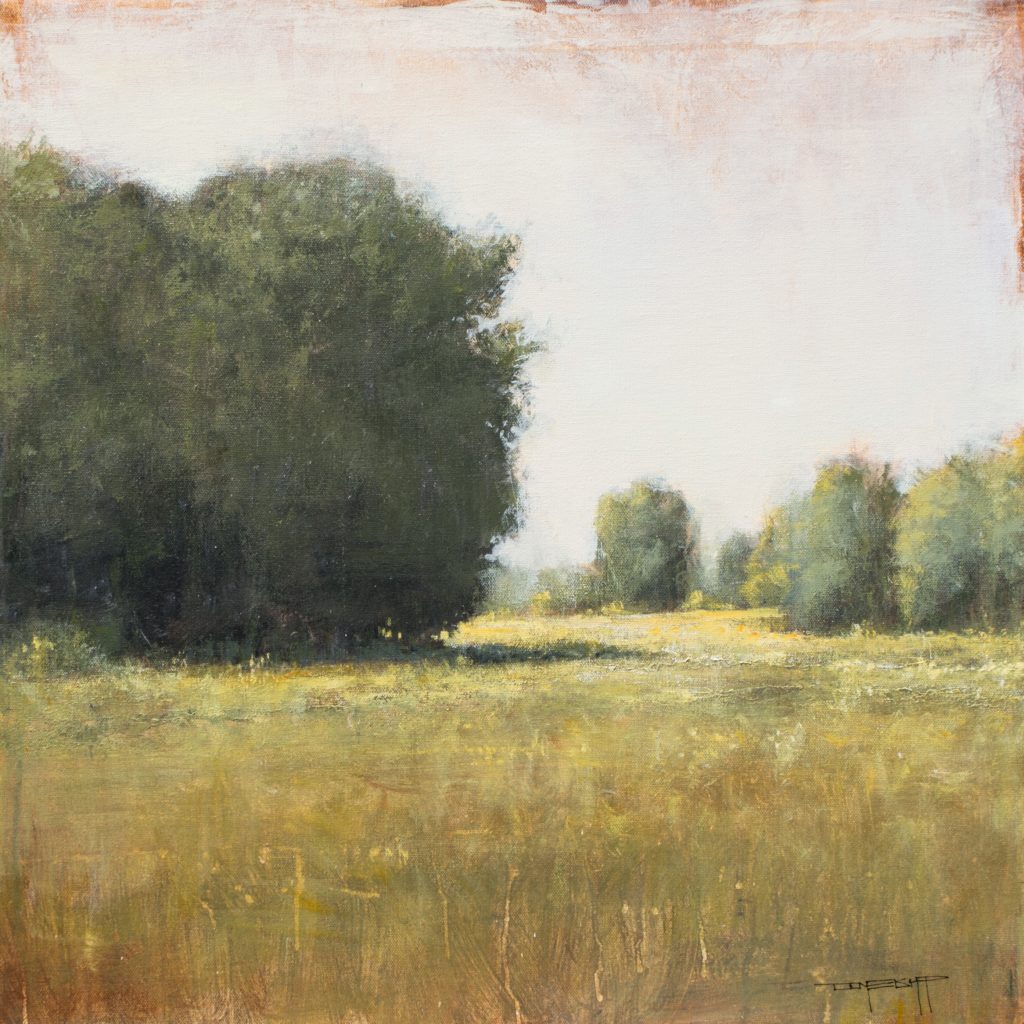
Bishop can paint tighter and more traditionally, and he occasionally does. But he says he is more interested in “painting atmosphere rather than things.” His interest in tonalism predates his arrival in the Pacific Northwest, where weather conditions create plenty of atmosphere. “I grew up in Southern California, and my influences are the early California impressionists,” says Bishop. “That area is generally brighter with more light, but I would still paint in this style if the landscape were more brightly colored. If I were painting in the Mojave Desert, I would still seek out a more classic tonal approach. I was painting this way before I moved here.”
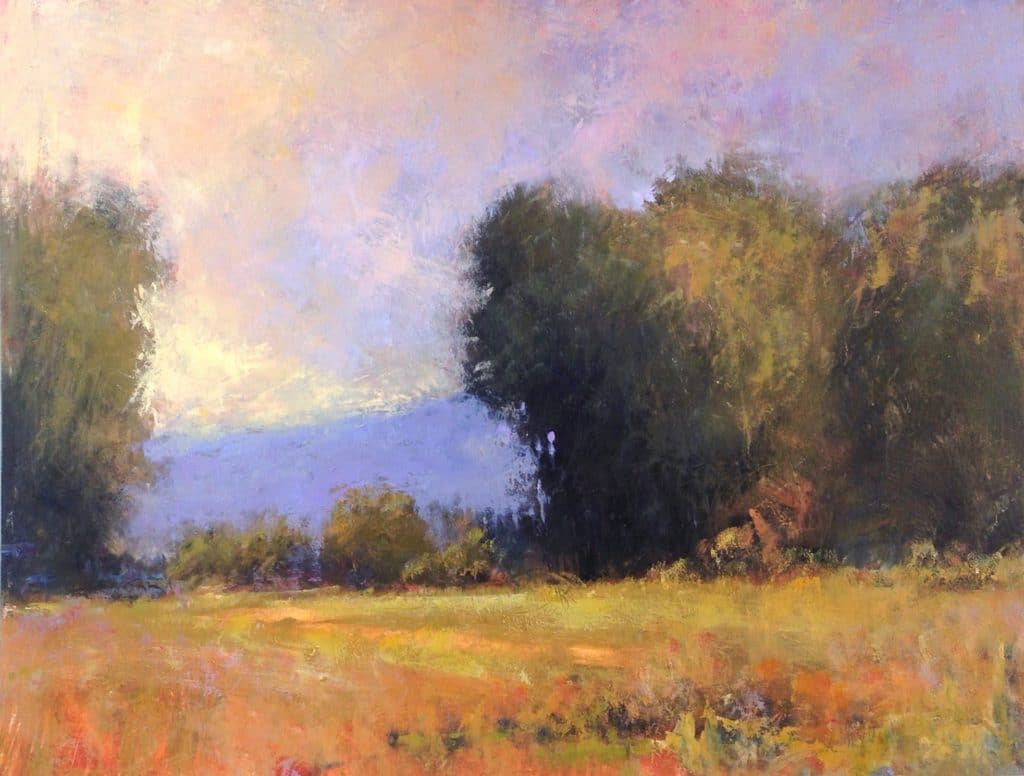
Although his style is squarely tonal, Bishop can paint in a more typically plein air way, and he also enjoys painting minimalist abstract pieces. “For years I painted the traditional plein air style, but a couple of years back I started painting tonalism-type pieces even for competitions,” Bishop says. “It has been fine. Some people raised their eyebrows at first, and I don’t win as many awards as I did previously, but I still win some now, and they sell well, so the paintings are connecting with people.
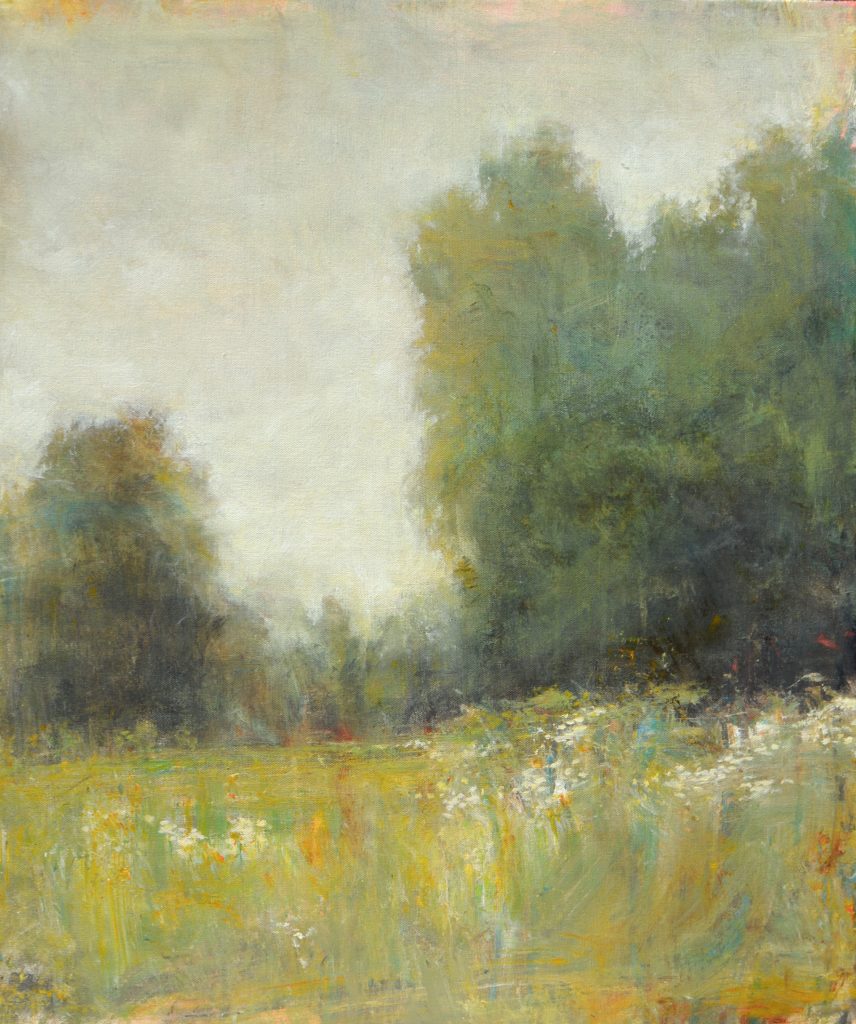
“The truth is I experiment all the time, and I fight with it all the time. But tonalism is a forgiving approach. For a long time I wondered if it was challenging enough, or if it fit in the tradition of plein air, but I don’t worry about that anymore. This is my approach and if you connect with it, great.”
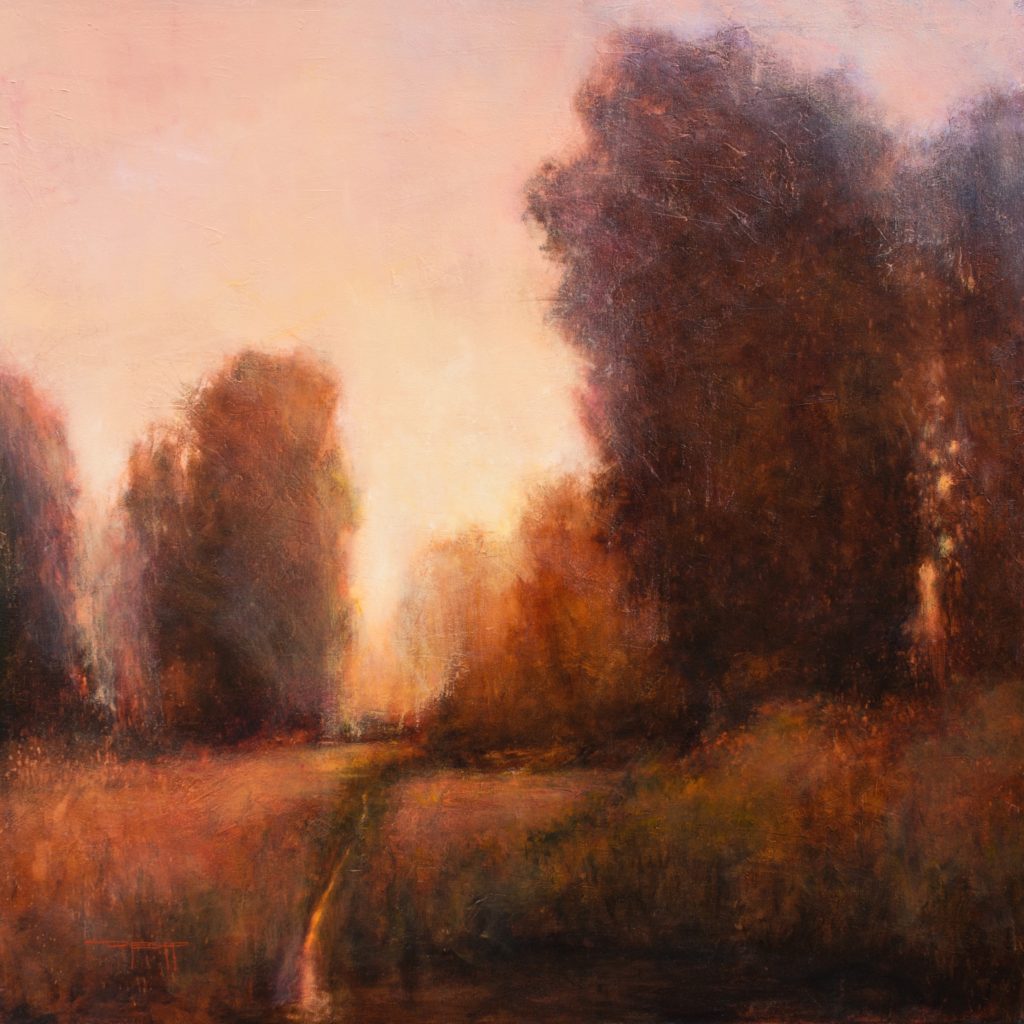
Bishop doesn’t just buck the trend and paint in a tonalist style in plein air competitions — he paints in a tonalist approach on a large format in competitions. “I have done as large as 48 x 60 inches at an event,” he says. “I rarely finish in one sitting; my favorite approach is to finish in two or three sessions. Monet and his group did that — they didn’t work alla prima but painted many layers of paint.
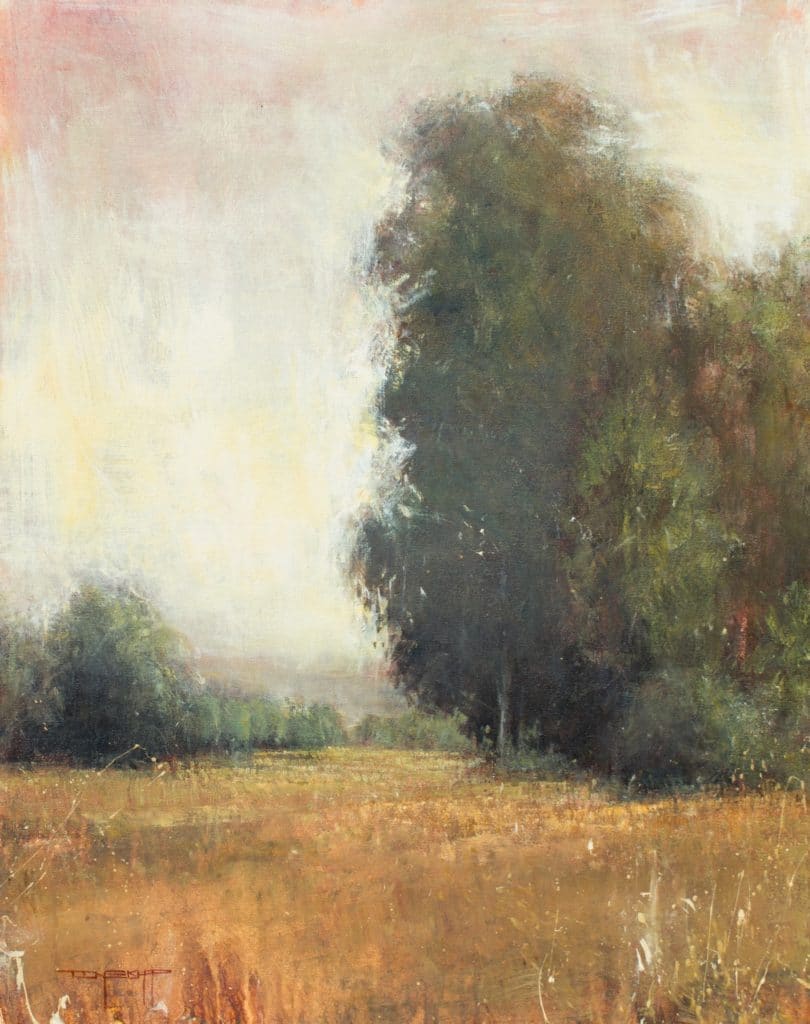
“I like three passes on one piece, and I never plan on finishing in one session. The first pass is basic structure: the lights and darks, the setup, the staging. The second pass is atmosphere and light. That’s when I lock everything in. For example, the afternoon, evening, or morning light vibe is what I’m capturing in the first pass in terms of dark-light balance. The second pass will address the backglow of trees and smaller light effects. I know how to approach each layer beforehand, and I set it all up so I can focus on that. I have more time to actually capture what the light is doing at the time, because I have already set up what it looks like.”
He goes on, “Toward the finish I think, What is the fewest amount of strokes that will take care of this area? What’s the least amount of detail to make it read? I’m trying to do it with less. It will not be as literal, but it will capture the atmosphere of the scene better. I want to make the more abstract base of the piece speak the loudest. Especially in the field, I try to get to a point on the base where it locks in and reads, and then I stop. I’m like ‘Oh, there it is, but it’s not finished.’
“Once I get that down, I try to keep that base as the main painting. It is not the final piece, but I want the magic of that one moment, that one spot where the painter is, ‘Oh, there it is, now I just have to finish it.’ I try to do the minimal amount of work to complete the piece and still keep all that magic. That point is not about how accurate and correct it is with the scene, but rather the light, atmosphere, and feeling of it.”

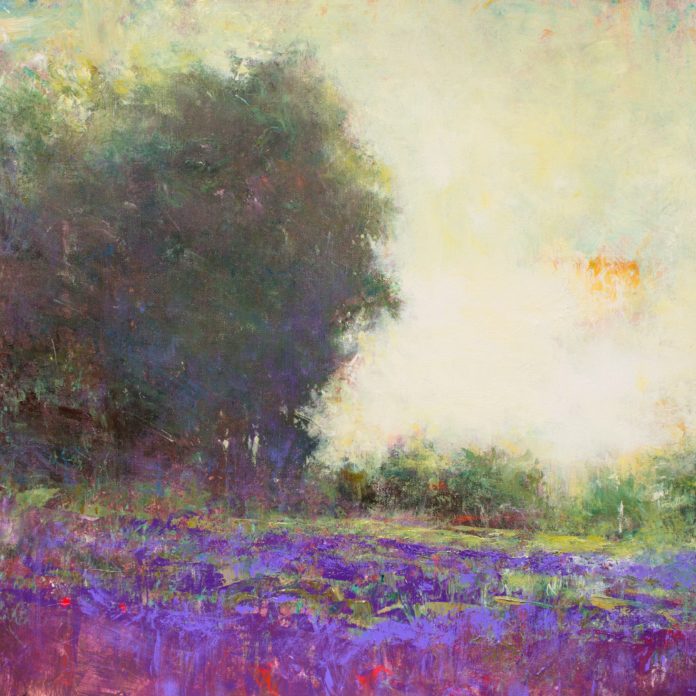
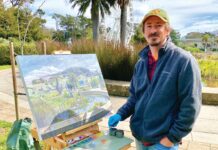
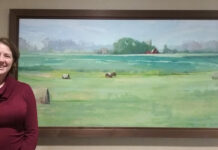
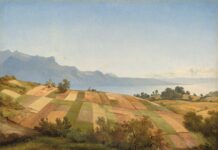
Beautiful work. I definitely connect with this style. I am going native now. Sticks, stones, knives, forks – whatever it takes.